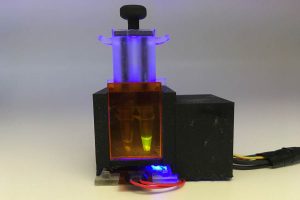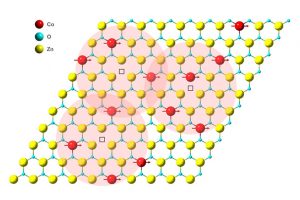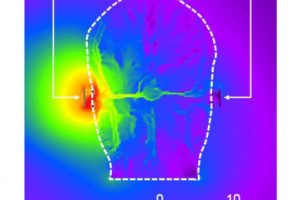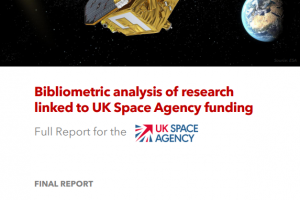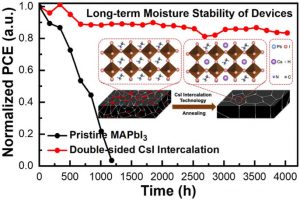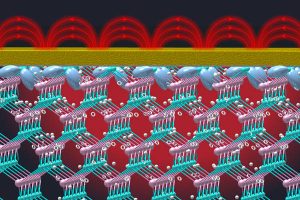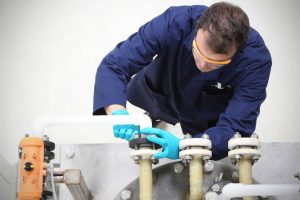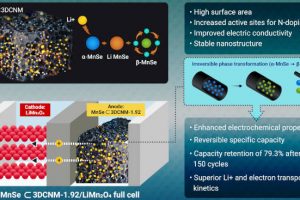Harvard and MIT researchers have teamed up to prototype a self-contained saliva-based diagnostic Covid test that can distinguish between variants in an hour and is “just as accurate as the PCR tests now used”, according to MIT. It is called ‘miSherlock’, for ‘minimally-instrumented Sherlock’, where Sherlock is a Crispr-based DNA/RNA test invented at Harvard’s Wyss Institute for Biologically Inspired Engineering. Two ...
Research
The latest electronics research news from within the industry and universities from around the world.
Berkeley team build world’s thinnest magnet
A team at the US Department of Energy’s Lawrence Berkeley National Laboratory (Berkeley Lab) and UC Berkeley have built a cobalt-doped van der Waals zinc-oxide magnet from a solution of graphene oxide, zinc, and cobalt. Baking in a conventional lab oven transformed the mixture into a single atomic layer of zinc-oxide with a smattering of cobalt atoms sandwiched between layers of ...
Tissue-based human body communications are OK
Human tissue is a good transmission medium for connecting wireless binaural hearing aids, according to Tokyo University of Science. “For wearables to truly transcend portables, we will need to rethink the way in which devices communicate with each other,” according to the university. “The usual approach of using an antenna to radiate signals into the surrounding area while hoping to ...
UK Space Agency analyses impact of space research funding
The UK Space Agency has carried out a study to measure the effectiveness of its funding of space-related research over a ten year period – a “Bibliometric analysis of research linked to UK Space Agency funding”. It commissioned know.space, a specialist space economics consultancy, and Digital Science, a London-based research analytics company, to help produce the report. They were using data ...
Cesium helps perovskite solar last longer
Cesium iodide can improve the stability and efficiency of certain perovskite solar cells, according to researchers at Kanazawa University. Added to cells of the ‘MAPbI3‘ perovskite structure, by alternately depositing thin layers of MAPbI3 and CsI, atoms from Cs migrate and become intercalated into the crystal lattice (see diagram). “Our approach allowed us to produce layers with precise control over the ...
A simpler source of THz radiation
Plasmon-coupled semiconductor surface states can down-convert 1550nm optical wavelengths to terahertz frequencies four-orders of magnitude more efficiently than non-linear optical methods, according to UCLA. When a crystal is a semiconductor – p-doped InAs in this case – the ‘surface states’ created by the left-over bonds that are inevitable on the outside of a crystal lattice can create high gradient electric ...
£1.5m for UK silicon anode li-ion project
Innovate UK has approved funding for the £1.5m ‘Silicon anode battery for rapid electrification’ (Sabre) project, intended to improve energy density in electric vehicle grade lithium ion batteries. The money, via Faraday Battery Challenge at UK Research and Innovation, will go to Nexeon, Britishvolt and University College London (UCL) to deliver Li-ion test cells with a silicon anode material. “Silicon has a ...
AI looks for trouble at the Nuerburgring motor racing circuit
Fujitsu is developing artificial intelligence based safety cameras at the German Nuerburgring motor racing circuit. The 21km Nordschleife version of the circuit is where the experiments are taking place. “In contrast to the Grand Prix circuit, the Nordschleife has not yet been equipped with cameras and is therefore out of sight from race control,” according to Fujitsu. “This meant it was often ...
Warwick University wins £5.2m Prosperity Partnership
Warwick University has received £5.2 million in funding under one of the government’s Prosperity Partnerships to work with Element Six, a De Beers Group company, to develop and establish a supply chain for the next generation of diamond-enabled technologies. They include: the thermal management of semiconductors in high powered communications (enabling all of our high demand 5G and video streaming) quantum ...
Chemistry tames MnSe anodes for Li-ion cells
Manganese selenide would have promising characteristics as an anode material for lithium ion batteries, if only it didn’t swell almost 160% during charging-discharging cycles, breaking apart the electrode. Now researchers from the Korea Maritime and Ocean University have found a way to embed MnSe in a 3D carbon nanosheet matrix where its expansion can be tamed. “We focused on manganese ...
 Electronics Weekly Electronics Design & Components Tech News
Electronics Weekly Electronics Design & Components Tech News
